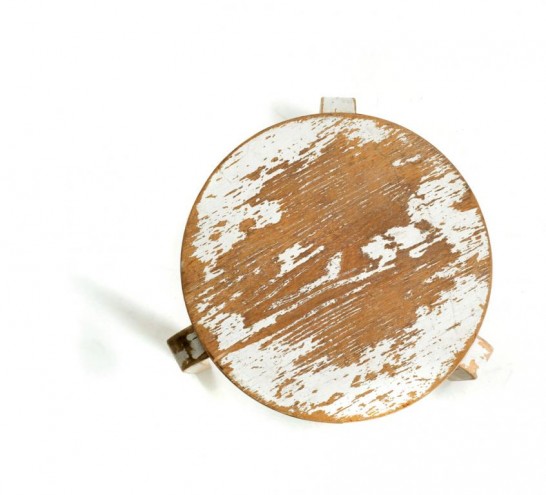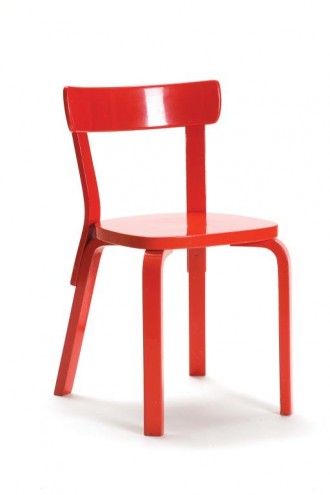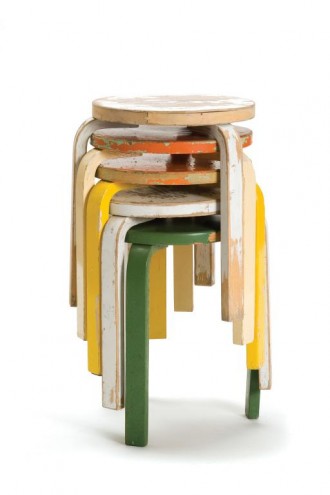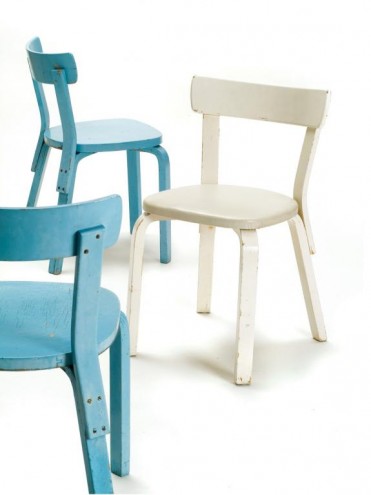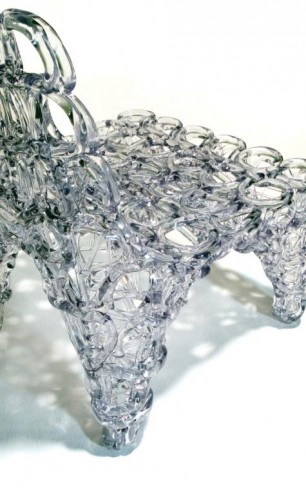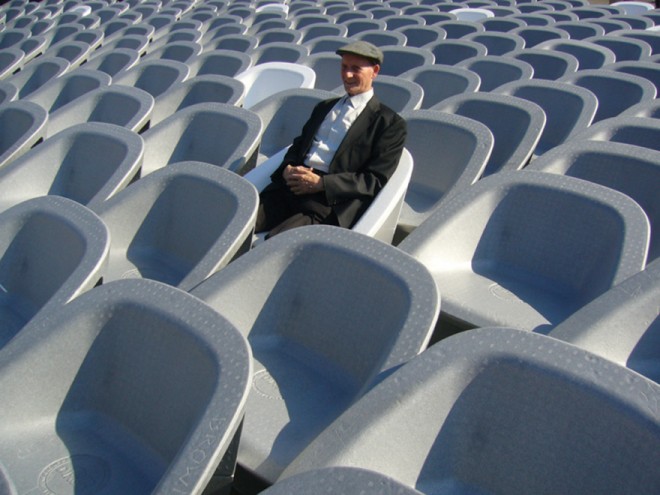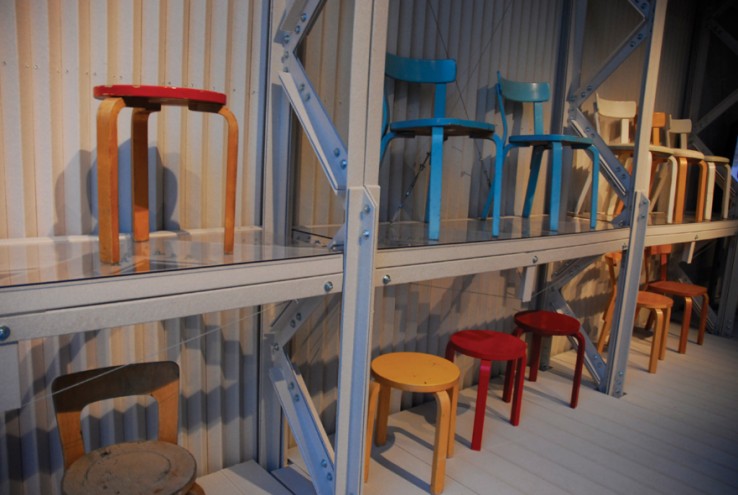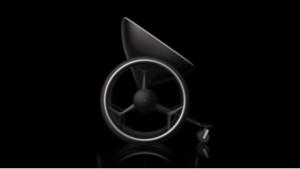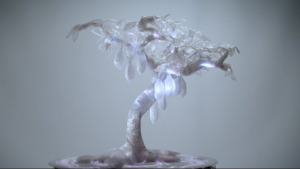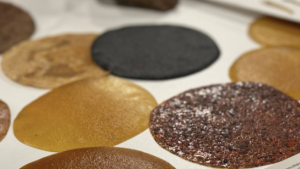First Published in
"I've got to admit that I'm not very green. Sustainability is an incredibly difficult set of behaviours," Tom Dixon told Inhabitat journalist Julie Taraska at the second HauteGREEN exhibition of sustainable design at NY Design Week 2007. Seemingly tapping into the maverick spirit that created his infamous S chair, Dixon explodes notions of sustainability such as material, longevity, distribution and psychology.
Julie Taraska (JT): Are there any eco-friendly materials that you have become particularly interested in?
Tom Dixon (TD): I don't think new materials are going to be the answer. It's about finding ways of using existing ones in new ways. One of the 21st-century ones that has got potential in engineering terms is bamboo – given that in some uses it is stronger than steel and that it grows a metre a day. It is really a miracle material and needs to be worked in more modern ways than it has been historically.
JT: Do you think about eco-friendliness when choosing materials?
TD: It is everybody's responsibility to be thinking about it on a constant basis now. For instance, I use plastic as a precious material, not as a cheap material. Take the Fresh Fat Easy Chair, which in sustainable terms could be considered to be appalling because it uses something like 50kg of plastic. But, because the chair is only made if people want it, and it is made with such a huge amount of plastic that it is going to last for a very long time and with any luck is going to be increasing in value, it may well showcase one of the better uses of plastic in chairs.
Another project that could be seen as totally unsustainable was a project I did in Trafalgar Square in London last year. I decided to give away a design. Designs are always very high-priced objects, highly undemocratic. This project involved setting up in Trafalgar Square one day and giving away 500 chairs. We got rid of them in seven-and-a-half minutes.
This is an interesting project in terms of talking about sustainability. The chairs are made out of polystyrene, which is a material that is infinitely recyclable. If you make a chair that doesn't have a secondary material or component, then it should and often will be recycled as a matter of course. The polystyrene in these chairs is already 40% recycled from packaging material. I'm showing this chair again at Moss and the idea is that if I can sell one of these chairs, I can fund another project where I can then give away more chairs.
The furniture business is extremely old-fashioned in the way that it operates. But with clever thinking, there's lots of different ways in which one could distribute chairs in ways that are closer to, say, the business models of Google, where you give away your core activity but you make money by other means. For instance, another way of paying for this chair might be to actually just brand it with somebody's logo and in that sense get somebody's marketing logo into people's houses but in the process you're giving away your core activity.
Anyone who is a designer will know how tough it is to actually make money from selling artefacts. But by giving them away for free, you become very popular and make money in other ways. The free chairs that I was giving away are now worth, I think, $98 on eBay – rather than being throwaway, they're now increasing in value.
JT: Artek, whose name is a combination of the words "art" and "technology" creates humanist pieces, many of bent wood and metal. What attracted you to the company?
TD: Artek is an interesting company because it's probably the only remaining modernist company from the 1920s and 1930s that has survived in its original form. It still makes the same set of furniture in the same factory, from the same wood as it did in 1927. I don't think any other company in the history of furniture is still able to say that.
In the 1920s Alvar Aalto was trying to find a way of making modernist furniture, which was made mainly in Germany and France at the time primarily out of the modern materials of glass and metal. Partly because he was a humanist and liked nature, and partly because he couldn't get the raw materials or technologies, he was forced to make the furniture out of birchwood.
The project that we have been working on at Artek is an idea based on not actually making any new furniture at all. We got the very unique possibility in Finland to buy back a lot of Artek furniture because it's one of the suppliers to kindergartens, prisons, hospitals and churches. Finland is actually flooded with some of this iconic furniture and it's very easy for us to buy sets of the furniture, which are matching but of varying ages. The idea is to keep on collecting and when we've got enough, to put them back into circulation. Not as antiques, but as new old production and calling them Second-Cycle.
For me, it's kind of fantastic the way that this furniture, which is iconic designer furniture, is used in such an everyday way. People repaint it, adapt it, chop the legs off or add bits on – they don't use it in a precious way at all. These chairs, because they're built in such a robust way and used in an everyday way, actually grow more beautiful with age. I much prefer the chairs that are 20 to 30 years old and have been painted by hand to the new production that we do now.
What is exciting right now in America is eBay where second-hand objects become very available to large audiences again. In terms of modern methods of dealing with things, it's interesting to see how the second-hand has become desirable again and there are new systems and new ways of bringing those things to market. There's nothing really new going on but just cleverer ways of doing existing things, which are going to help us a lot. You hope that things like eBay become systems whereby everything becomes recyclable eventually.
JT: Let's also talk about your Ecoware. It's a line of homeware that is made out of bamboo (85%) and biodegradable plastic. How did the line come about?
TD: I discovered this material, which had been used to make disposable plant pots for seedlings. Instead of planting the seedling in a ceramic pot and then throwing away the ceramic pot, they were planting seedlings in this biodegradable plastic. It looked a lot like bakelite, which was a very appealing possibility.
I set about trying to convert this material into a material for tableware, which took me two years of hassle and investment. In the end, it proved to be counterproductive because people don't really want to buy things that biodegrade – because they will biodegrade.
Psychologically there is often a problem with environmentally sound products. They're not in the bright colours that people expect, and people don't really like the idea of buying something that is a designer artefact, and expensive, with the idea that it is just going to vanish into the ground and be attacked by microbes. This psychological problem of how people consume things needs to be overcome.
JT: Do you think that designers do have a responsibility to design products that will make people's lives better as opposed to something that just looks pretty
in the corner?
TD: It would be interesting if design could save the world. For that to happen, big companies have to become more interested in the value that design can bring to solving problems.

